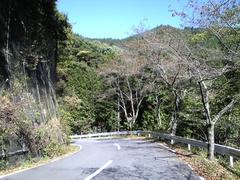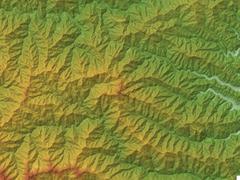
Mitsumine Shrine Visiting Hours, Tickets, and Guide to Chichibu Historical Sites
Date: 04/07/2025
Introduction
Mitsumine Shrine, situated atop the remote Okuchichibu mountains in Saitama Prefecture, is one of Japan’s most revered spiritual destinations (Shinto Miraheze; Chichibu Omotenashi). Established nearly 1,900 years ago, the shrine is renowned for its powerful connection to Shinto mythology, breathtaking natural scenery, and striking architectural features, such as its rare triple torii gate and iconic wolf guardians (Japan Experience; Fun Chichibu). Whether you are seeking spiritual rejuvenation, cultural exploration, or a scenic mountain retreat, Mitsumine Shrine offers an immersive experience that blends ancient tradition with the beauty of the Chichibu region (MATCHA; Trip.com).
Table of Contents
- Legendary Origins and Founding Myths
- Evolution as a Spiritual Center
- Enshrined Deities and Wolf Guardians
- Architectural and Natural Highlights
- Visiting Hours, Tickets, and Access
- Seasonal Events and Best Times to Visit
- Facilities, Accessibility, and Travel Tips
- Chichibu Historical Sites and Nearby Attractions
- Frequently Asked Questions (FAQ)
- Conclusion and Planning Resources
Legendary Origins and Founding Myths
Mitsumine Shrine traces its legendary foundation to nearly 1,900 years ago, attributed to Prince Yamato Takeru no Mikoto during the reign of Emperor Keikō. Inspired by the panoramic vistas of Mt. Myōhō, Mt. Shiraiwa, and Mt. Kumotori, the prince established the shrine to honor the primordial Shinto creators, Izanagi and Izanami. These three peaks symbolized the site’s spiritual significance, giving rise to the name “Mitsumine” (“three peaks”) (Shinto Miraheze; Chichibu Omotenashi).
Evolution as a Spiritual Center
Throughout the Heian period, Mitsumine became a center for Shugendō—an ascetic tradition blending Shinto, Buddhism, and indigenous beliefs. Its remote, mist-shrouded location made it ideal for mountain ascetics (yamabushi) and spiritual seekers. By the Edo period, Mitsumine Shrine had evolved into a major pilgrimage destination, with ancient trails such as Omotesandō and Urasandō still attracting hikers and devotees today (Chichibu Omotenashi).
Enshrined Deities and Wolf Guardians
The shrine venerates Izanagi and Izanami, the divine couple credited with creating Japan. Uniquely, Mitsumine is protected by stone wolf guardians (Oinusama), reflecting the local reverence for the Japanese wolf as a sacred messenger and protector, instead of the more common lion-dog statues (komainu) found at other shrines (Japan Core Guide). These wolves symbolize the interconnectedness of nature and the spiritual world, a theme found throughout Japanese folklore and culture.
Architectural and Natural Highlights
- Mitsutorii (Triple Torii Gate): A rare, triple-arched gate marking the transition from the mundane to the sacred, symbolizing the three peaks and setting Mitsumine apart from other shrines (Japan Experience; Fun Chichibu).
- Zuishinmon Gate: Known for its elaborate Edo-period woodcarvings and vibrant colors, rivaling the craftsmanship of Nikko’s Toshogu Shrine (Japan Experience).
- Haiden and Honden: The Hall of Worship (Haiden) and the sanctified Main Sanctuary (Honden) sit among ancient shinboku (sacred trees), with ornate decorative elements and dynamic carvings throughout (Fun Chichibu).
- Sacred Cedar Forests: Towering, centuries-old cedars envelop the shrine, enhancing its tranquil and mystical atmosphere (Fun Chichibu).
- Sea of Clouds (Unkai): In late autumn and winter, the shrine often appears above a “sea of clouds”—a breathtaking natural phenomenon best viewed in November (Donny Kimball).
- Subsidiary Shrines and Homotsuden (Treasure Hall): Explore smaller shrines, a treasure hall with wolf artifacts, and the imposing statue of Prince Yamato Takeru-no-Mikoto (Fun Chichibu; Donny Kimball).
Visiting Hours, Tickets, and Access
- Visiting Hours: Generally open from 8:00 AM to 5:00 PM. Hours may vary by season or during special events (MATCHA; official Mitsumine Shrine website).
- Admission: Free to enter the shrine grounds. The Treasure Hall requires a small fee (around 300 yen).
- Guided Tours: Available via local operators or advance booking through tourism offices.
- Getting There:
- From Tokyo: Take the Seibu Ikebukuro Line Limited Express to Seibu-Chichibu Station, then transfer to a Seibu Bus bound for Mitsumine Shrine (approx. 75 minutes) (Japan National Parks).
- By Car: Parking available near the entrance; advisable during off-peak periods.
- Accessibility: While the main approach is paved, the grounds include stairs and uneven terrain. Wheelchair users should contact the shrine in advance for assistance.
Seasonal Events and Best Times to Visit
- Spring: Cherry blossoms bloom in late March to early April, with shibazakura (moss phlox) at nearby Hitsujiyama Park (touristplaces.guide).
- Summer: Lush forests and mountain breezes provide a cool retreat; summer festivals and rituals are common.
- Autumn: From late October to mid-November, vibrant maple foliage transforms the shrine, drawing photographers and visitors nationwide.
- Winter: Snow blankets the grounds, and the sea of clouds phenomenon is most prominent. Special illumination events occur at nearby Misotsuchi Icicles (japanrar.com).
Facilities, Accessibility, and Travel Tips
- Facilities: Restrooms, souvenir shops, and a few food stalls are located near the main area. The Mitsumine Shrine Hotel offers ryokan lodging with onsen hot springs (Japan Experience).
- Accessibility: Some areas are accessible by wheelchair with assistance, but the terrain is steep and includes many steps.
- Travel Tips:
- Arrive early to avoid crowds, especially during festivals and peak foliage.
- Dress in layers and wear sturdy shoes.
- Bring cash for bus fares, offerings, and small purchases.
- Check the bus timetable for return trips, as buses are infrequent (MATCHA).
- Photography is permitted in outdoor areas but restricted within some buildings.
- Safety: Respect wildlife, do not feed animals, and observe proper etiquette during rituals and ceremonies.
Chichibu Historical Sites and Nearby Attractions
- Chichibu Shrine: Renowned for elaborate wood carvings and the UNESCO-listed Chichibu Night Festival (japanrar.com).
- Hitsujiyama Park: Famous for springtime shibazakura and panoramic views of Mt. Buko.
- Hodosan Shrine: Another of Chichibu’s Three Shrines, accessible by train and bus.
- Chichibu Muse Park: Recreational area with gardens and seasonal blooms.
- Hashidate Limestone Cave: Saitama’s only public cave with striking rock formations.
- Urayama Dam: Scenic cherry blossom viewing area with hiking trails.
- Misotsuchi Icicles: Dramatic winter ice formations illuminated at night (japanrar.com).
- Mount Ryōkami: Popular hiking destination and one of Japan’s 100 Famous Mountains.
Frequently Asked Questions (FAQ)
Q: What are the visiting hours of Mitsumine Shrine?
A: Generally 8:00 AM to 5:00 PM, but check official sources for seasonal changes.
Q: Is there an entrance fee?
A: No, shrine entry is free. However, the Treasure Hall charges a nominal fee.
Q: How accessible is Mitsumine Shrine?
A: The shrine has slopes and stairs; wheelchair access is limited. Contact the shrine for details.
Q: When is the best time to visit?
A: Each season offers unique beauty—spring for cherry blossoms, autumn for foliage, winter for the sea of clouds.
Q: Are guided tours available?
A: Yes, through local tourism offices or by advance reservation.
Q: Can I take photographs?
A: Yes, in outdoor areas. Flash and drone photography are generally prohibited inside shrine buildings.
Conclusion and Planning Resources
Mitsumine Shrine stands as a testament to Japan’s spiritual heritage, architectural artistry, and natural splendor. Its unique triple torii, wolf guardians, and ancient cedar forests create an atmosphere where myth and nature intertwine. With free admission, easy access from Tokyo, and nearby historical sites, Mitsumine Shrine is an essential destination for anyone seeking to experience the essence of Chichibu (Japan Experience; Fun Chichibu; MATCHA; Chichibu Omotenashi).
For the latest updates, transportation schedules, and event information, visit the official Mitsumine Shrine website and local tourism portals. Enhance your journey by downloading the Audiala app for curated guides, maps, and exclusive content.
References
- Mitsumine Shrine, 2025, Shinto Miraheze
- Mitsumine Shrine Guide, 2025, Chichibu Omotenashi
- Mitsumine Shrine Architecture, 2025, Japan Experience
- Mitsumine Shrine Highlights, 2025, Fun Chichibu
- Mitsumine Shrine Visitor Info, 2025, MATCHA
- Mitsumine Shrine Spirituality, 2025, Japan Core Guide
- Mitsumine Shrine Natural Phenomena, 2025, Magical Trip
- Mitsumine Shrine Visitor Experience, 2025, Donny Kimball
- Mitsumine Shrine Access and Travel, 2025, Trip.com
- Chichibu Cultural Sites, 2025, touristplaces.guide
- Chichibu Regional Attractions, 2025, japanrar.com





